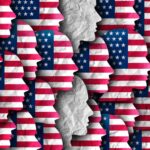
Labor disputes are an inherent part of the business landscape, particularly in industries that rely heavily on unionized workforces. While strikes are a legitimate form of collective bargaining, they can create uncertainty, heighten tensions, and pose significant security risks to both human and physical assets. For HR managers, CEOs, and other C-level executives, the effective management of labor disputes is not only about ensuring business continuity but also about safeguarding people, property, reputation, and long-term stakeholder trust.
Strike security services are specialized, proactive security measures designed to protect facilities, personnel, and assets before and during a labor dispute. These security services involve highly trained strike security officers who understand the intricacies of union environments, as well as the legal frameworks that govern labor relations. By deploying these professionals, companies can mitigate conflicts, prevent violence, deter vandalism, and maintain operational stability during challenging times.
This comprehensive guide outlines why strike security is necessary, the roles and responsibilities of strike security officers, the importance of a detailed security analysis, and practical steps to prepare for a potential strike. It is intended to provide senior executives and HR professionals with actionable strategies to help maintain peace, order, and compliance with labor laws—ultimately minimizing disruptions to the organization’s core operations.
Understanding Strike Security Services
What are Strike Security Services?
Strike security services are a dedicated set of protocols, personnel training methods, and physical security measures implemented by an organization when facing the threat of a labor dispute. These services often include:
- Specialized security officers trained in labor dispute scenarios.
- Pre-strike risk assessments to identify vulnerabilities and threats.
- Access control procedures to ensure only authorized personnel enter the facility.
- Evidence gathering in compliance with the National Labor Relations Act (NLRA).
- Coordination with law enforcement and local authorities to maintain legal and ethical standards.
The core objective of these services is to create a stable, safe environment for all parties—employees (both union and non-union), management, and even suppliers or clients—throughout the potentially volatile period of a strike.
Why is Strike Security Necessary?
Strikes are not solely about work stoppages and negotiations. They often have broader, more complex implications that can extend beyond the picket lines. The necessity of strike security arises from multiple factors:
- Protecting Employees:
During a strike, heightened emotions can lead to hostile confrontations. Even peaceful protests can spiral into violence if not properly managed. Strike security officers help ensure that all personnel, including non-union employees who continue to work, are protected from harm. - Safeguarding Property and Assets:
Facilities, equipment, and inventory are at risk during labor disputes. Acts of vandalism or sabotage can disrupt operations and damage valuable property. Security officers deter these actions through a visible, professional presence and rapid incident response. - Maintaining Regulatory Compliance:
Compliance with labor laws, including the NLRA, is crucial. Strike security professionals understand the legal boundaries of evidence gathering, ensuring that any information collected can be legitimately used in subsequent labor negotiations or legal proceedings. - Preserving Business Continuity:
Strikes can lead to production slowdowns, logistical disruptions, and financial losses. Effective strike security measures can help maintain a level of normalcy and operational flow, preventing long-term damage to the company’s brand image and market position. - Minimizing Liability and Risk Exposure:
By documenting incidents and following evidence-gathering protocols, strike security services help the organization mitigate legal risks. Well-documented evidence can refute false claims, support disciplinary actions if needed, and strengthen the company’s position in any legal disputes.
Conducting a Comprehensive Strike Security Analysis
A robust security analysis lays the groundwork for effective strike security measures. This involves assessing vulnerabilities, planning for multiple contingencies, and preparing the organization and its people for the complexities of a labor dispute. Key steps in this analysis include:
- Facility Entry and Exit Assessment:
Identify all entrances and exits—main gates, side doors, loading docks—and determine how these points can be secured or monitored. This includes verifying that security personnel and access control systems are in place to prevent unauthorized entry. - Vulnerability Identification:
Highlight areas where security gaps could emerge. For instance, are there blind spots in video surveillance? Are there insufficiently lit areas where altercations could occur? Understanding these vulnerabilities allows for targeted improvements. - Access Control Protocols:
Determine protocols to ensure only authorized personnel gain entry to the facility. This may involve ID checks, turnstiles, or advanced biometric systems. Non-union employees who must cross picket lines need clear instructions and safe passage. - Coordination with Authorities:
Engage local law enforcement, fire departments, and emergency medical services in pre-strike planning sessions. Clarify each agency’s role and improve communication channels to expedite response times should incidents arise. - Evidence Gathering Guidelines:
Outline the methods and tools that security officers will use to document events. Determine what can be recorded, how long footage will be stored, and how to handle information ethically and in compliance with labor laws.

Facility Vulnerability Assessment
| Vulnerability Point | Risk Level (High/Med/Low) | Mitigation Strategy | Responsible Party |
| Main Entrance Gate | High | Add armed/unarmed security officers; CCTV upgrade; ID checks | Security Manager |
| Side Door (Warehouse) | Medium | Install additional lighting and cameras; restrict employee access cards | Facility Manager |
| Loading Dock Area | High | Deploy roving security patrols; reinforce locks; escort for delivery personnel | Security Officer In-Charge |
| Employee Parking Lot | Medium | Increased lighting; mobile patrol units; controlled vehicular access | Security Shift Supervisor |
| Perimeter Fencing | Low | Periodic fence integrity checks; signage to deter trespassing | Maintenance Team |
The Role of Strike Security Officers
Strike security officers are the linchpin of maintaining order during a labor dispute. Their responsibilities are multi-dimensional and include not only physical protection but also strategic communication, compliance, and detailed documentation.
Key Responsibilities:
- Maintaining Peace and Order:
Strike security officers intervene to de-escalate confrontations and prevent violent incidents. Their presence often deters aggressive behavior. They are trained to handle emotionally charged situations with professionalism, patience, and tact. - Protecting Property:
These officers safeguard the company’s physical assets—from sensitive documents and expensive machinery to inventory and vehicles. Their vigilance reduces the likelihood of sabotage, break-ins, and vandalism. - Ensuring Safety of All Parties:
Their mandate extends to everyone involved—union workers, management teams, non-striking staff, suppliers, and even picketers. Officers ensure that no one is harmed, and they work to maintain a balance of safety, legality, and respect for workers’ rights. - Gathering and Reporting Information:
Officers document incidents meticulously, using video, audio, and written reports. This information can serve as valuable evidence in legal proceedings, disciplinary actions, or future negotiations. Proper documentation also protects the company against false accusations. - Communication and Liaison:
Strike security officers serve as a communication bridge between the organization, law enforcement, and the workforce. Clear, factual updates help reduce misinformation and tension. Good communication lays the groundwork for negotiation and resolution. - Legal and Ethical Compliance:
Operating within the boundaries of labor laws and respecting the NLRA is non-negotiable. Officers are trained to uphold all legal standards, ensuring that no party’s rights are infringed upon.
Training and Skill Sets of Strike Security Officers
Because of the complexity involved in labor disputes, strike security officers must have more specialized training than conventional security personnel. This includes:
- Conflict De-Escalation Techniques:
Training focuses on verbal communication, empathy, and situational awareness. Officers learn to identify warning signs early and neutralize confrontations before they escalate. - Legal and Regulatory Knowledge:
Officers must understand local and federal labor laws, including the NLRA, so they can correctly handle evidence and respect picketers’ rights. - Cultural Sensitivity and Emotional Intelligence:
Labor disputes can involve deep-seated emotional and cultural issues. Officers must navigate these situations sensitively, showing respect to all parties to prevent inflaming tensions. - Crisis Management and Emergency Response:
Training includes first aid, evacuation procedures, and coordination with emergency services. In case of a crisis, they can guide employees to safety swiftly and efficiently. - Technology Proficiency:
Modern security operations often rely on surveillance equipment, access control systems, and digital documentation tools. Officers should be proficient in using these technologies for effective, real-time monitoring.
Skills and Training for Strike Security Officers
Sample Table: Skills and Training for Strike Security Officers
| Training Domain | Key Competencies | Importance |
| Conflict De-Escalation | Verbal Negotiation, Active Listening | Reduces risk of violent incidents |
| Legal & Ethical Compliance | Understanding NLRA, Evidence Protocols | Ensures lawful gathering of evidence |
| Cultural Sensitivity | Respect for Union Traditions, Empathy | Maintains trust and fairness |
| Emergency Response | First Aid, Evacuation Management | Enhances safety and reduces casualties |
| Technology Use | Surveillance Systems, Digital Reporting | Improves evidence accuracy and reporting speed |
Preparing for a Strike
Preparation is vital. When HR managers and C-level executives anticipate a strike, being proactive can significantly reduce business disruptions and prevent conflicts from escalating out of control. Consider the following steps to prepare for a labor dispute:
- Review Insurance Coverage:
Before a strike occurs, review existing insurance policies. Ensure that you have adequate coverage for property damage, business interruption, and liability claims. Some underwriters offer strike-specific coverage, which can provide financial relief if costly incidents occur. - Develop a Contingency Plan:
This plan should outline how your business will continue operating if key personnel are absent. Identify alternative suppliers, secure temporary staffing solutions, and consider adjusting production schedules to mitigate lost output. A solid contingency plan reduces uncertainty and stabilizes the business during turbulent times. - Train Employees on Emergency Protocols:
Employees should know what to do in an emergency, whether it’s a safety threat, a fire, or severe weather conditions. Conduct regular training sessions and simulations. Educating employees fosters confidence, preparedness, and a sense of cooperation. - Hire Professional Strike Security Services:
Bringing in a specialized team ensures expert handling of sensitive situations. They can conduct risk assessments, manage crowds, and communicate with both internal and external stakeholders. Vet potential partners carefully, choosing those with proven track records and references in labor dispute environments. - Establish Clear Communication Channels:
Transparent, frequent communication helps prevent misinformation and panic. Keep employees, suppliers, and customers informed about developments. Encourage staff to voice concerns, and provide them with regular updates. Cultivating open dialogue builds trust and stability, even in uncertain times.

Detailed Steps to Strengthen Contingency Planning
Step 1: Scenario Analysis
- Identify various strike scenarios: short-term strikes, long-term work stoppages, intermittent walkouts, or rotating picket lines.
- Assess the potential impact on different business units: production, logistics, customer service, HR, etc.
Step 2: Resource Allocation
- Budget for additional security personnel, legal advice, and insurance premiums.
- Set aside emergency funds for property repairs, downtime costs, and possible legal fees.
Step 3: Communications Strategy
- Draft template messages in advance for employees, suppliers, and media outlets.
- Assign a spokesperson or PR specialist to maintain consistent messaging.
Step 4: Legal Preparations
- Consult labor law attorneys to ensure all contingency measures and security practices adhere to the NLRA and other relevant regulations.
- Document all proactive steps taken to demonstrate good faith and legal compliance.
Step 5: Post-Strike Recovery Plan
- Plan for a smooth return to normal operations once the dispute is resolved.
- Outline steps for repairing relationships with union members, rebuilding trust, and reviewing what worked (and what didn’t) during the strike.
Pre-Strike Preparation Checklist
Sample Table: Pre-Strike Preparation Checklist
| Preparation Task | Assigned To | Due Date | Status |
| Review Insurance Coverage | CFO / Risk Manager | 2 Months Pre-Strike | In Progress |
| Develop Contingency Plan | Operations Manager | 1 Month Pre-Strike | Completed |
| Conduct Employee Emergency Training | HR Department | Ongoing | Scheduled |
| Secure Strike Security Services | Security Manager | ASAP | Under Review |
| Set Communication Protocols | Chief Communications Officer | 2 Weeks Pre-Strike | Pending |
Maintaining Order and Compliance During the Strike
Once the strike begins, the company must remain vigilant and responsive. The following guidelines can help maintain order:
- Respect Lawful Picketing:
Union members have the right to peaceful protest. Ensure that your security officers do not infringe upon these rights. Any attempt to unlawfully hinder peaceful protests can backfire legally and reputationally. - Monitor Entrances and Exits:
Implement stringent access control to ensure only authorized personnel enter the premises. Inform non-union employees of safe routes to cross picket lines and share guidelines on how to interact (or not interact) with striking workers. - Document Incidents Diligently:
In case of harassment, vandalism, or violence, thorough documentation is essential. Use cameras, written incident reports, and timestamped logs. This evidence is vital for any post-strike legal reviews or negotiations. - Regular Check-Ins with Staff:
Keep communication lines open. Check in with non-striking employees to ensure their safety and morale remain intact. Updated information reduces anxiety and confusion. - Liaise with Local Authorities:
If tensions escalate, coordinate with the local police or private dispute resolution services. Having pre-established relationships and clear communication channels ensures a timely response.
Compliance with the National Labor Relations Act (NLRA)
Adherence to the NLRA and other relevant labor laws is paramount. The NLRA protects employees’ rights to organize, form unions, and engage in collective bargaining. Companies must respect these rights even as they protect their interests.
- Evidence Gathering:
Security officers may record events for documentation, but they must ensure that the evidence-collection process does not intimidate or harass striking workers. The goal is to fairly and accurately record incidents, not to antagonize or provoke. - No Retaliation:
The organization cannot use the strike security presence as a tool to retaliate against the union. Such actions would be unlawful and could result in penalties, fines, or damage to the company’s reputation. - Transparent Communication:
Explain why security measures are in place and emphasize that they are intended to maintain safety and order, not to infringe on the right to strike. Transparency builds trust and reduces the risk of further conflict.
After the Strike: Post-Resolution Strategies
The end of a strike offers an opportunity to rebuild, learn, and improve. Post-strike strategies should focus on restoring trust, repairing damaged property, and refining future contingency plans.
- Evaluate Security Measures:
Review what worked and what didn’t in terms of security deployment, training, and strategies. Update protocols to address any gaps discovered during the strike. - Repair Damaged Infrastructure:
If there was any property damage, address it promptly. A swift return to normal operational conditions signals resilience to stakeholders. - Legal and Insurance Follow-Ups:
Submit claims for any covered losses, finalize reports, and consult with legal advisors. Ensure that all evidence is properly stored and accessible for future reference. - Employee Relations and Communication:
Engage in open dialogues with union representatives, returning employees, and management. The goal is to mend any frayed relationships and move forward cooperatively. - Continuous Improvement:
Incorporate lessons learned into updated contingency plans, employee training programs, and security protocols. Continuous improvement ensures the organization is even better prepared for future disputes.
Engaging Professional Strike Security Services
When a labor dispute appears on the horizon, timing is everything. Acting promptly to secure reliable strike security services can significantly reduce potential disruptions, ensuring that your employees remain safe, your property is protected, and your operations continue to run smoothly. Partnering with a reputable firm that brings deep industry expertise, specialized training, and tailored risk mitigation strategies ensures that you’re fully prepared for the unique challenges your organization may face.
Contact RSS Staffing for a Quote:
If you’d like more information or are ready to explore customized strike security solutions, RSS Staffing can provide guidance and actionable insights. By reaching out to our team, you can begin discussing:
- Customized Risk Assessments: Gain a security plan designed around your facility’s layout, workforce composition, and specific industry conditions.
- Training and Protocol Development: Receive support in creating clear protocols, conducting educational workshops, and preparing employees for safe, compliant operations in the event of a strike.
- Long-Term Security Partnerships: Establish an ongoing relationship with security professionals who understand your business intimately, enabling a swift, effective response to any future disputes.
With RSS Staffing at your side, you’ll have the peace of mind that comes from knowing you’re supported by experts committed to helping you maintain a secure, stable environment—even under the pressure of a labor dispute.
Final Thoughts:
Strikes present a multifaceted challenge for organizations, sitting at the intersection of labor rights, operational continuity, and stakeholder expectations. Although every labor dispute has its own unique contours, certain guiding principles remain consistent: safeguarding personnel, protecting property, maintaining orderly conduct, and adhering to all relevant legal standards.
For HR professionals, CEOs, and other C-level executives, making a strategic investment in specialized strike security services is often the decisive factor between a chaotic, costly event and a controlled, compliant resolution. Key measures—such as conducting a comprehensive security analysis, providing targeted training for employees, employing professional security teams, and maintaining transparent communication—can empower a business to endure a labor dispute while preserving stability and trust.
By aligning their approach with these proven strategies, leaders can help their organizations successfully navigate even the most challenging strikes. Partnering with an experienced provider like RSS Staffing ensures access to seasoned strike security professionals who understand the complexities of labor disputes and are committed to upholding the organization’s interests. With the right support and preparation, companies can emerge from labor tensions more unified, resilient, and poised for sustainable growth.









